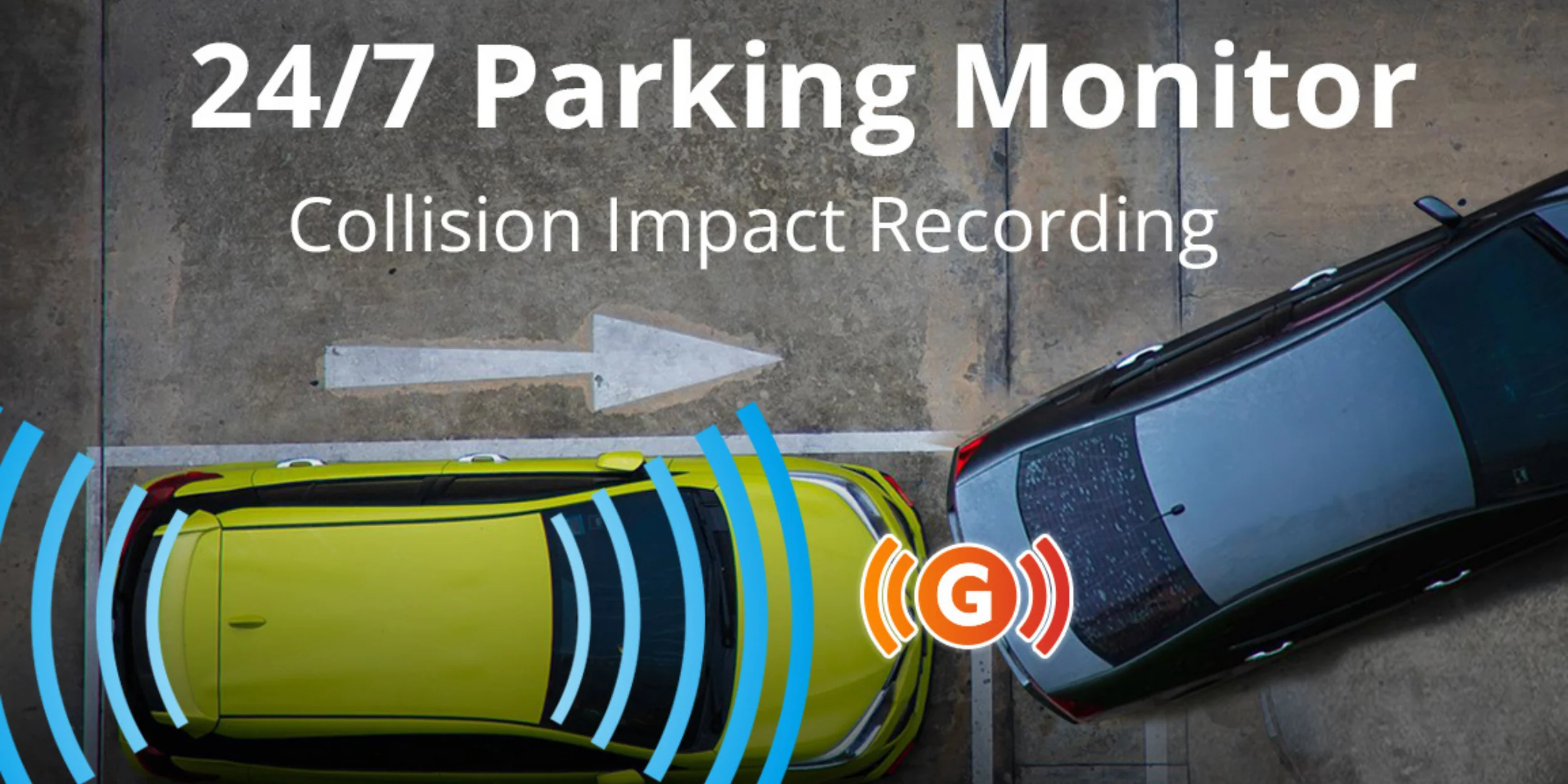Leaving your car unattended feels like a risk, doesn't it? You're leaving it vulnerable to hit-and-runs, vandalism, or theft, with often no way to prove what happened.
Dash cam parking mode is a surveillance function that actively monitors your vehicle when the engine is off. It uses motion and impact sensors to automatically record incidents, providing critical evidence and acting as your car’s 24/7 security guard, making it an essential feature.
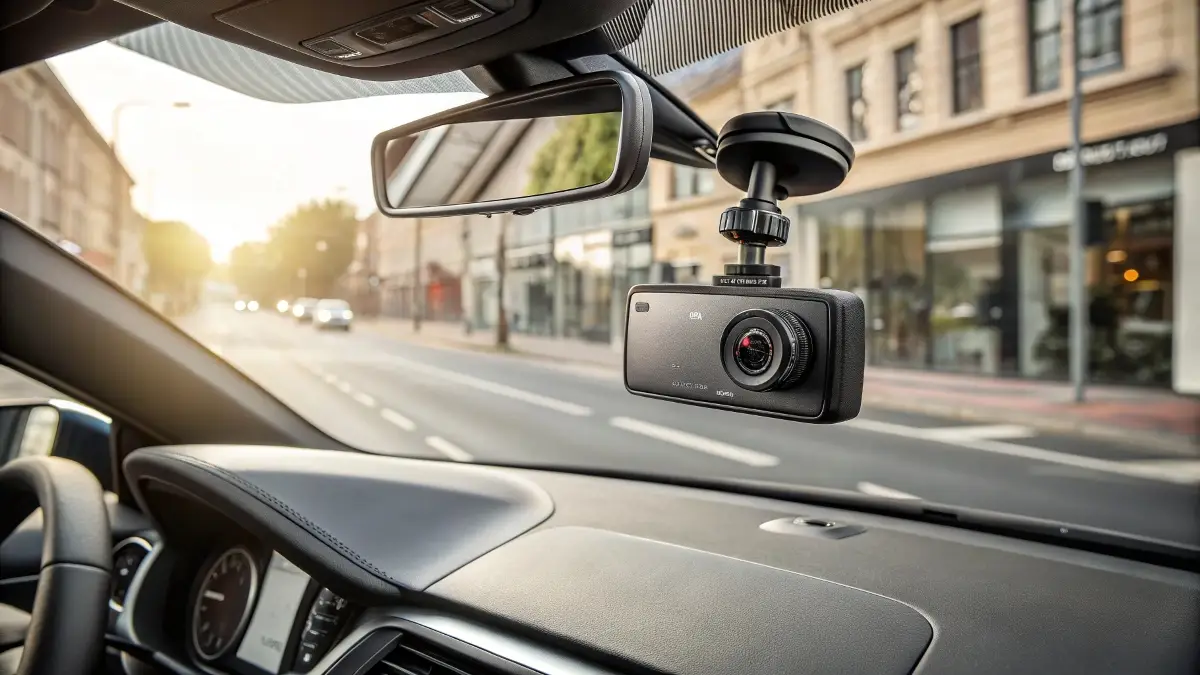
As someone who has dedicated my career to automotive safety, I believe protection shouldn't end when you turn off the ignition. A car is often a person's second-largest investment, yet it sits completely defenseless for most of the day. Parking mode1 is the technology that bridges this critical safety gap. But not all parking modes are created equal. To truly secure your vehicle, you need to understand the different technologies at play and how they function in the real world. Let's explore how these systems actually work to protect your property.
How Do Different Parking Mode Technologies Actually Function?
Confused by terms like time-lapse, buffered, or motion detection? Choosing the wrong mode can mean you either miss the incident entirely or come back to a dead battery.
Parking modes function in several ways: impact detection (G-sensor)2, motion detection, time-lapse, or low-bitrate recording. Each offers a different balance of power consumption, storage use, and event coverage, so choosing the right one is key for reliable surveillance.
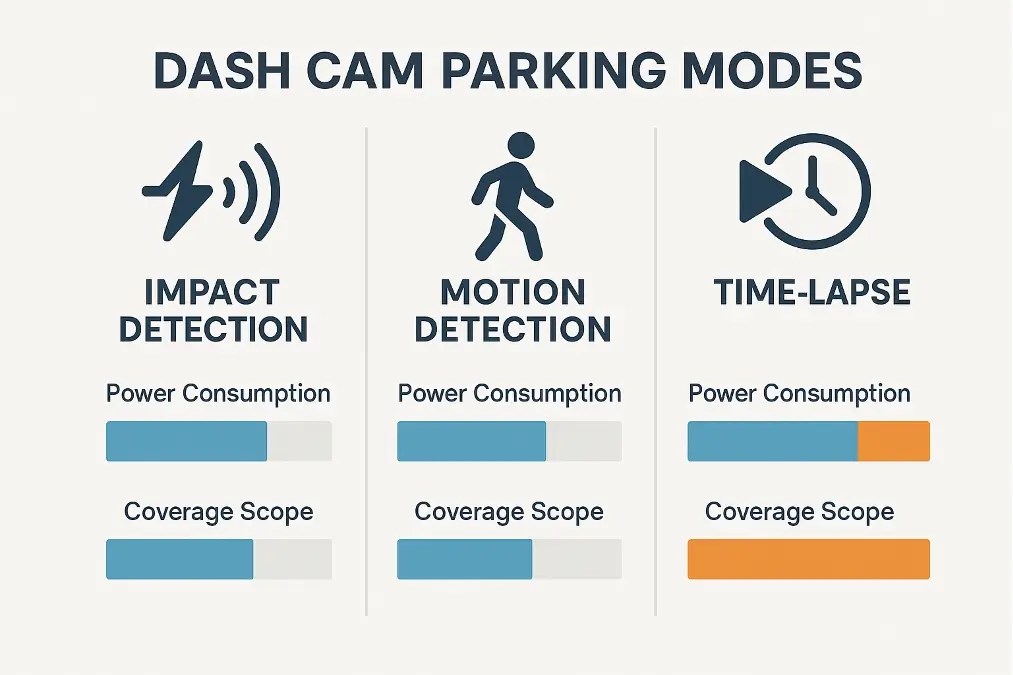
At VST Tech, we've spent countless hours testing these modes to understand their real-world trade-offs. For a technical professional like my friend Jacky, knowing the difference is crucial for a perfect installation. It’s not just about having the feature; it's about deploying the right version of it for the specific need.
The Core Methods of Surveillance
Your dash cam has to be smart about how it watches over your car to conserve power and storage. Here's how the main types differ:
- Impact-Only Detection: This is the most basic mode. The dash cam's G-sensor is in a deep-sleep state, drawing minimal power. When it detects a physical shock—like another car's door hitting yours—it wakes up and saves a clip. While it's great for power saving, its major flaw is that it only records after the event, often missing who or what caused it.
- Motion & Impact Detection: This mode adds a layer of intelligence. It uses the image sensor to detect movement in front of the camera. If someone walks up to your car, it starts recording. This is better for catching potential vandals before they act. However, it uses more power and can be prone to false triggers from passing cars, swaying trees, or even heavy rain, filling your memory card with useless footage.
- Continuous Low-Power Recording: More advanced cameras offer modes like time-lapse or low-bitrate recording. Time-lapse captures frames at a very low rate (e.g., 2 frames per second) and stitches them into a video, compressing hours of footage into a few minutes. Low-bitrate mode records continuously at a lower video quality to save space. Both provide a complete record of what happened, but use more power and storage than detection-only modes.
| Parking Mode Type | Trigger Mechanism | Power Consumption | Key Advantage | Key Disadvantage |
|---|---|---|---|---|
| Impact Detection | G-Sensor (Physical Shock) | Very Low | Best for battery preservation | Misses pre-incident context |
| Motion Detection | Image Sensor (Movement) | Moderate | Catches activity before impact | Can have many false triggers |
| Time-Lapse | Continuous (Low Frame Rate) | Moderate-High | Provides a full timeline | Can miss fast events between frames |
| Low-Bitrate | Continuous (Low Quality) | High | Records everything without gaps | Consumes the most power & storage |
Why is a Dedicated Hardwiring Kit the Only Truly Professional Solution?
Worried that powering your dash cam will drain your car's battery and leave you stranded? Using the wrong power method, like a cheap adapter, can make this a reality.
A dedicated hardwiring kit is the only professional method because it connects directly to the fuse box. This provides stable power and allows the camera to intelligently switch modes, while a voltage cutoff feature protects your car's battery from ever being drained.
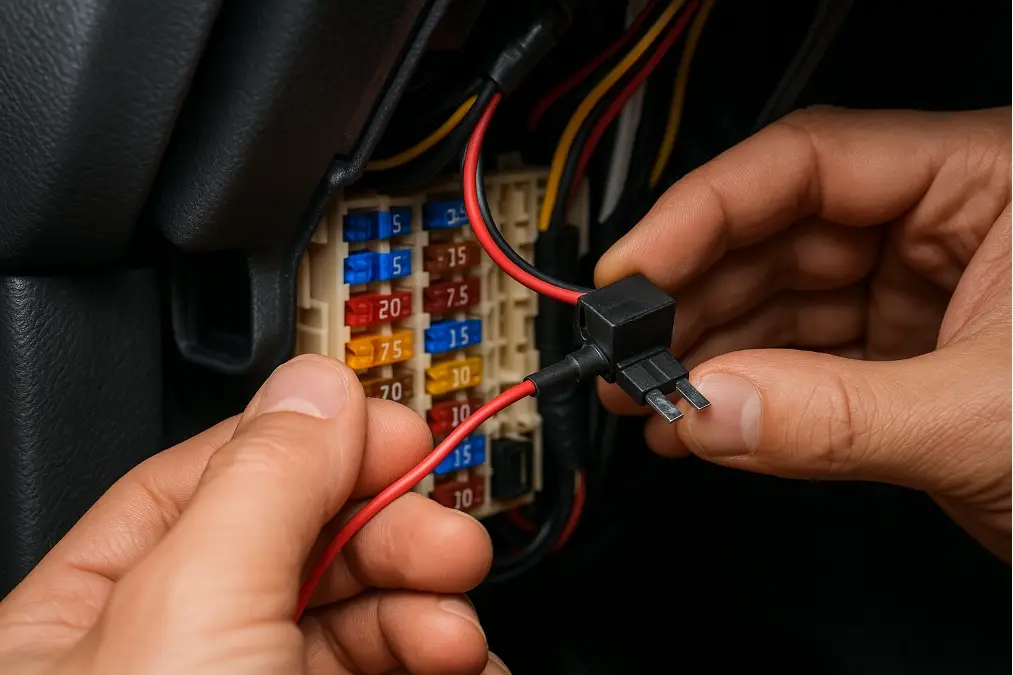
I cannot stress this enough: how you power the dash cam is as important as the camera itself. I've seen countless users complain about unreliable parking modes, and the problem almost always traces back to an improper power setup. For a reliable, set-and-forget system, there is no substitute for a quality hardwire installation.
The Unseen Flaws of Alternatives
Many people are tempted by simpler solutions, but they come with significant risks that a professional would never accept.
- OBD-II Port Adapters: These seem convenient, but they can be problematic. On many modern vehicles, plugging a device into the OBD-II port prevents the car's complex computer systems (the CAN bus) from fully going to sleep. This can lead to a slow but steady battery drain that a simple voltage cutoff might not prevent, resulting in what's known as "parasitic drain3." It's a hidden danger that can leave you with a dead battery when you least expect it.
- Cigarette Lighter Sockets: This is the worst option for parking mode, as nearly all of these sockets lose power when the car is turned off. It simply doesn't work for surveillance.
The Hardwiring Standard
A proper hardwiring kit connects to two different circuits in your fuse box:
- A Constant Power (BATT+) Fuse: This circuit is always on, even when the car is off. It provides the power for parking mode.
- A Switched Power (ACC) Fuse: This circuit is only on when the key is in the "Accessory" or "On" position.
This two-wire setup is what tells the dash cam that you've parked, signaling it to enter parking surveillance mode. When you start the car, it detects power on the ACC wire and switches back to normal continuous recording. This intelligent switching, combined with a user-configurable low-voltage cutoff, is the only way to ensure reliable operation without ever compromising your vehicle's battery health. It is the foundation of a true safety system.
What Advanced Features Separate a Good Parking Mode from a Great One?
Think all parking modes just record a video of an incident? Basic systems do, but they often fail to provide the complete, actionable evidence you actually need.
Great parking modes offer buffered recording to capture seconds before an impact, thermal protection to prevent overheating, and cloud connectivity to send real-time alerts and video evidence directly to your phone, turning surveillance from reactive to proactive.
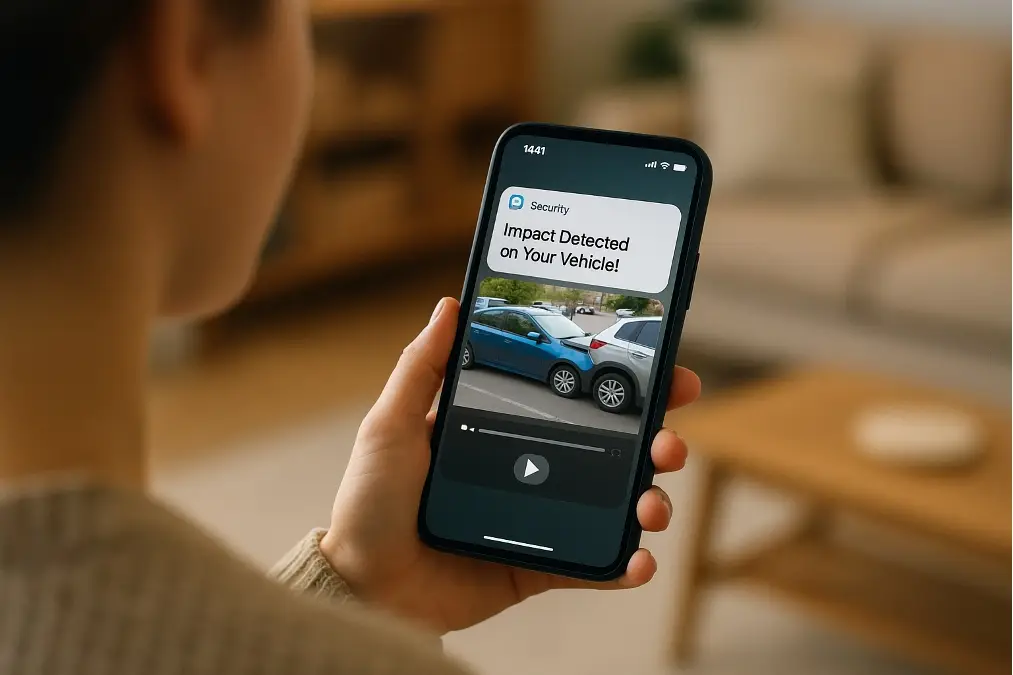
The difference between a basic and an advanced system is the difference between knowing something happened and knowing exactly what, when, and how—and being notified instantly. When we develop products at VST Tech, we focus on these advanced features because they solve the real-world frustrations users face.
Buffered Recording: The Critical Context
This is perhaps the single most important feature for evidential purposes. Standard impact detection records from the moment of impact. Buffered recording, also known as pre-buffering, constantly records a short loop of video (typically 5-10 seconds) to the camera's internal memory. When the G-sensor is triggered, the camera saves the clip including those crucial seconds before the event. This means you don't just see the dent appearing on your door; you see the license plate of the car that backed into you and drove off. Without this context, your footage is far less useful.
Environmental Protection: Heat and Power
A car's interior can become an oven in the summer. I've seen lesser cameras fail or even melt when parked in direct sunlight. A professional-grade dash cam must have a high-temperature cutoff. This feature, often managed through supercapacitors instead of volatile lithium-ion batteries, automatically shuts the device down if its internal temperature exceeds a safe operating limit, protecting the camera and its memory card from heat damage. This, combined with the low-voltage cutoff, provides a complete envelope of environmental protection.
Cloud Connectivity: Proactive Security
This is the pinnacle of modern parking surveillance. Systems with built-in 4G LTE can transform your dash cam into a real-time security device. When an impact is detected, the camera doesn't just save the file. It instantly uploads a clip to the cloud and sends a push notification to your phone. You can then immediately view the clip or even tap into a live stream from your camera, no matter where you are. This turns a passive recording device into an active alert system, giving you the power to react immediately.
結論
A quality parking mode is not a gadget, it's an essential security investment. It provides round-the-clock protection, captures undeniable evidence, and delivers true peace of mind for any car owner.
-
Understanding parking mode technology is essential for protecting your vehicle when it's parked. Explore this link to learn more about its benefits and features. ↩
-
Discover how G-sensor technology enhances vehicle security by detecting impacts, ensuring your car is protected even when you're not around. ↩
-
Understanding parasitic drain can help you avoid dead batteries and ensure your vehicle's systems function properly. ↩

